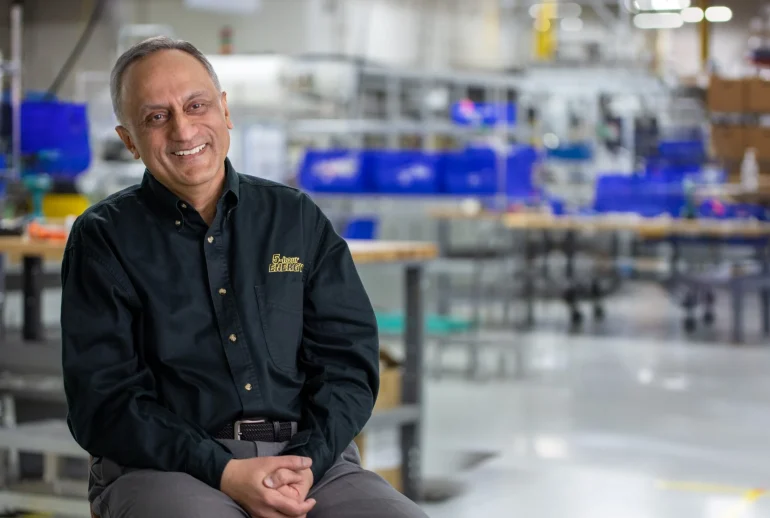Manoj Bhargava arrived in the U.S. with just $500 and no clear plan. Decades later, he launched 5-hour Energy — one of the most profitable products in American retail. No investors. No flash. Just a sharp idea, relentless focus, and an instinct for what people actually needed. This is how quiet persistence built a billion-dollar empire.
From spark to launch
Before 5-hour Energy became a billion-dollar brand, it started with one man’s quiet pursuit of a product that simply worked — for himself, and eventually for millions.

Who he was before the breakthrough ?
Manoj Bhargava grew up in India and moved to the U.S. in the 1960s. He enrolled at Princeton but dropped out after a year, uninterested in following a conventional path. For the next two decades, he lived mostly in the background — doing construction, running a small plastics company, and trying various ventures. None of them took off. By his early 40s, he had no public wins to show. But he didn’t stop. He kept observing, testing, and refining his thinking. He didn’t need attention — he needed a real opportunity.
Where the idea came from ?
That opportunity appeared in Thailand. During a local trade show, Bhargava tried a small, unlabeled energy shot that gave him an instant boost. It wasn’t sweet. It wasn’t cool. But it worked. Back in the U.S., he couldn’t stop thinking about it. While most energy drinks were marketed like sodas for teenagers, this was different. What if he could offer something smaller, cleaner, and more functional — designed for people who were simply tired and needed to stay sharp?
How he got started ?
Bhargava didn’t start with a business plan or a team. He hired a few food scientists, rented lab space, and developed a formula focused on results: no sugar, no crash, just sustained energy. In 2004, he launched 5-hour Energy — a 2-ounce shot with a single, bold promise. Instead of chasing press or trends, he focused on one thing: making it available where people actually needed it. That meant convenience stores, gas stations, and real-world shelf space. It was a quiet launch — but quietly effective.
From shelf to empire
Bhargava didn’t build momentum with noise — he built it with placement, timing, and a deep understanding of human behavior.

First wins from the checkout line
Instead of investing in flashy marketing, Bhargava focused on one simple question: where do exhausted people make quick decisions? His answer — the checkout counter. He made sure 5-hour Energy was right there, at arm’s reach, in gas stations and convenience stores. To boost momentum, he offered cash incentives to clerks who recommended the product. That small move sparked powerful word-of-mouth. Customers didn’t need convincing — they were tired, and the product worked. By the time larger brands paid attention, 5-hour Energy was already dominating impulse-buy real estate nationwide.
The revenue explosion
Within four years of its launch, the brand was making over $500 million per year. By 2012, it had passed the $1 billion mark. The economics were as sharp as the concept itself: each bottle cost under $0.50 to produce and sold for around $3. With no reliance on advertising or expensive teams, the margins were enormous. The product spread to over 200,000 retail locations, becoming the top-selling energy shot in the country. It wasn’t a volume war — it was a smart distribution play that outpaced even giants like Red Bull and Monster in retail positioning.
Roadblocks and backlash
As the brand rose, so did the scrutiny. Health groups raised concerns about caffeine dosage. Media outlets questioned safety. Bhargava didn’t panic or pivot — he clarified the labeling, stood by the formula, and moved forward. Meanwhile, imitators entered the market, trying to mimic the format. But they lacked what made the original powerful: focus, trust, and execution. Bhargava didn’t react to trends — he doubled down on what worked.
No noise. No big splash. Just a smart product, built for real needs — and placed exactly where it mattered. Manoj Bhargava didn’t chase attention. He solved a problem and let execution do the work.
- Start with something useful.
- Sell it where people decide.
- Keep going when others stop.
The formula isn’t easy — but it’s simple. And it still works.


